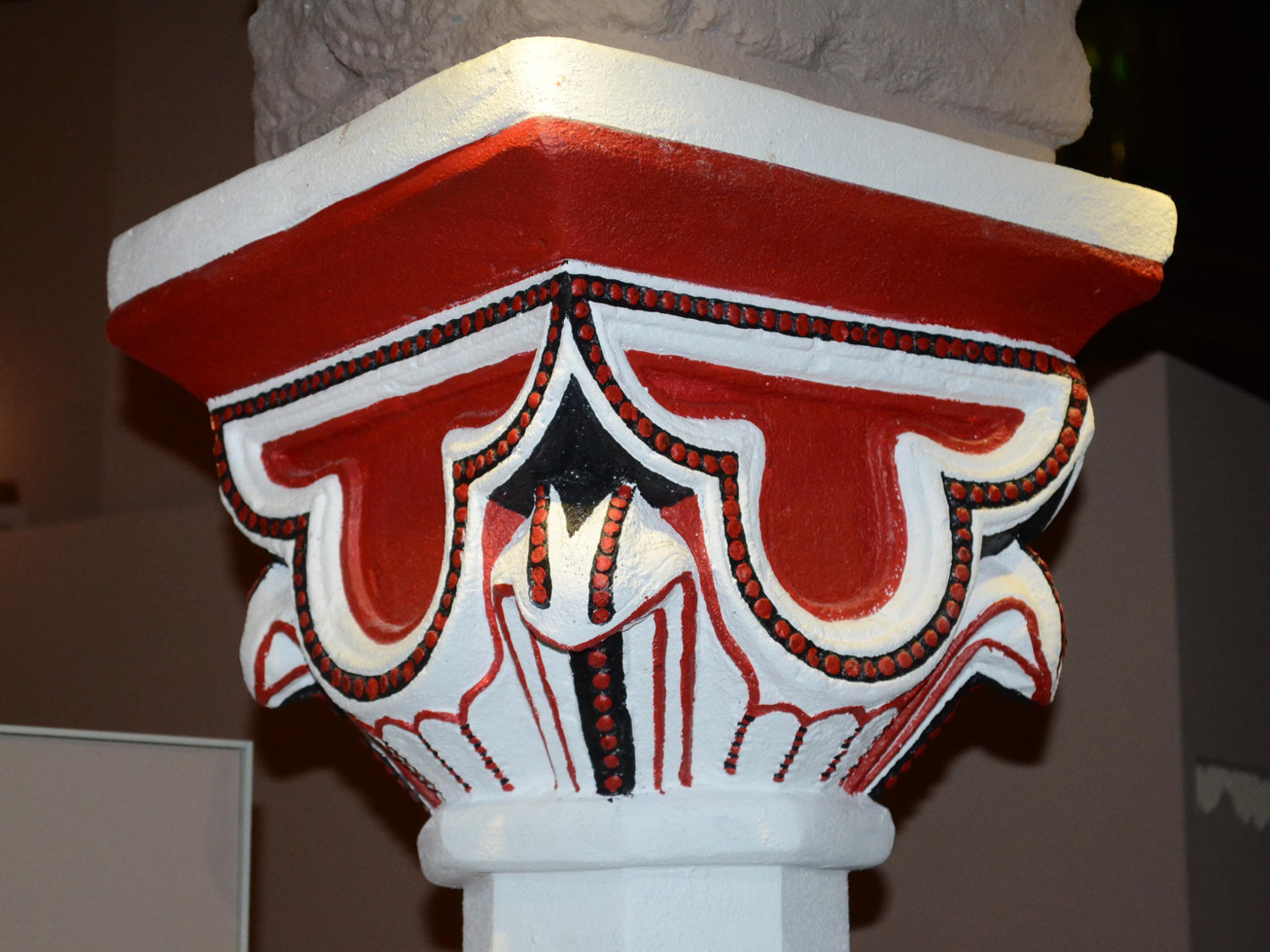Visit Reading Museum
Blagrave Street marked the western edge of the Abbey precinct until the 16th century. Reading Town Hall now stands here on the site of the medieval Hospitium's dining hall, where pilgrims visiting Reading Abbey could get a hot meal and bed for the night.
The stones of Reading Abbey were beautifully carved. Many were painted too. At Reading Museum you can see some of the original carved stones and this full-colour reconstruction of a column from the abbey's cloister. You can also view Britain's Bayeux Tapestry that tells the story of the Norman Conquest. Reading Museum is inside the Town Hall.

A painted replica of a Reading Abbey cloister capital inside Reading Museum
Digging Deeper - who were the Blagraves?
John Blagrave was an Elizabethan scientist and mathematician from Reading. He was a member of the wealthy Blagrave family and lived in Southcote Lodge. In 1585 he published a book called The Mathematical Jewel. Blagrave was called ‘the flower of the mathematicians of his age’. When Blagrave died in 1611, he left money for various charitable causes including money to help a poor female servant from Reading get married each year. To qualify she had to have served her employer well for five years. Blagrave is buried inside St Laurence’s Church, just a round the corner in Town Hall Square, where there is an elaborate memorial to him. He also left money to build a covered Piazza in the Market Place that was demolished in the 1860s.

An 1816 aquatint of John Blagrave's memorial that can still be seen inside St Laurence's church
One branch of the Blagrave family was involved in the transatlantic slave trade through their sugar plantations in Jamaica. John Blagrave’s nephew Daniel Blagrave was MP for Reading and a prominent supporter of the Parliamentarian forces during the English Civil War in the 1640s. Oliver Cromwell rewarded his support (including being one of the signatories of King Charles I death warrant) by giving him lands in Jamaica.
Daniel’s family developed Cardiff Hall and other plantations in Jamaica, working them with slaves. After the abolition of the transatlantic slave trade in 1808, attitudes started to change. When John Blagrove died in 1824 he left a dollar each to his 1500 slaves, who he referred to as his as ‘my loving people’. though they were not freed until until slavery was abolished in 1834.

Cardiff Hall, Jamaica, between 1820 and 1824, by James Hakewill





